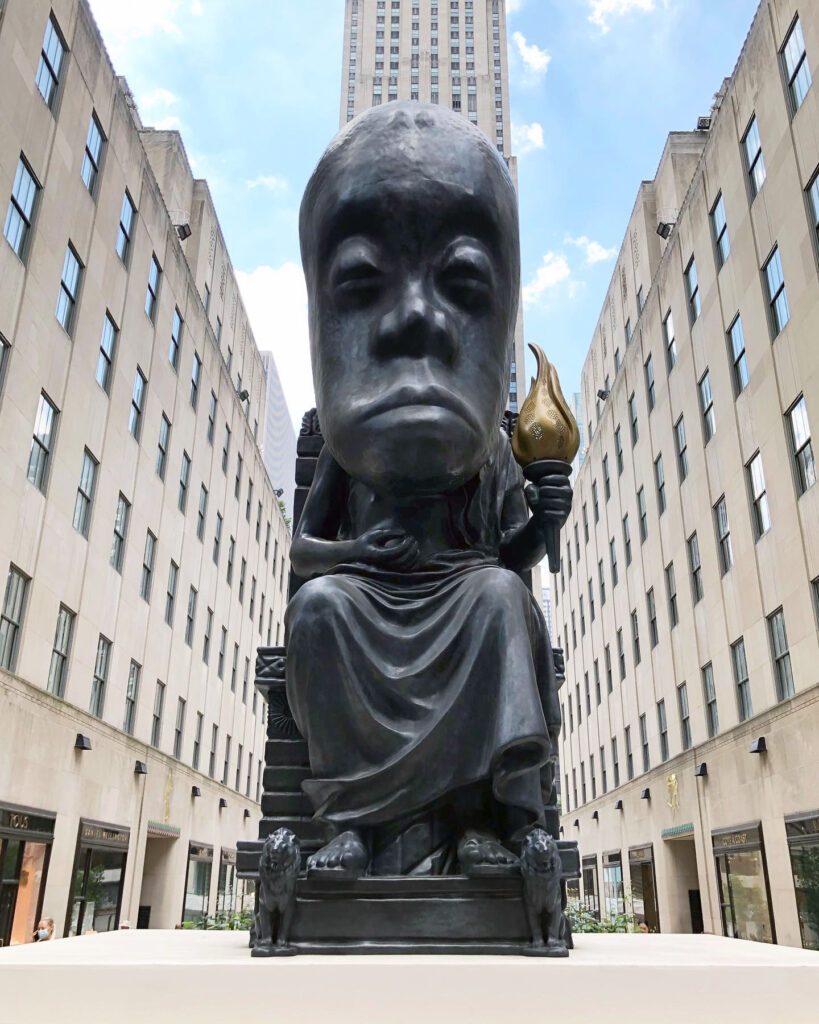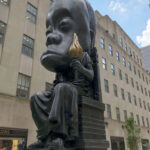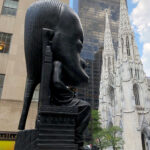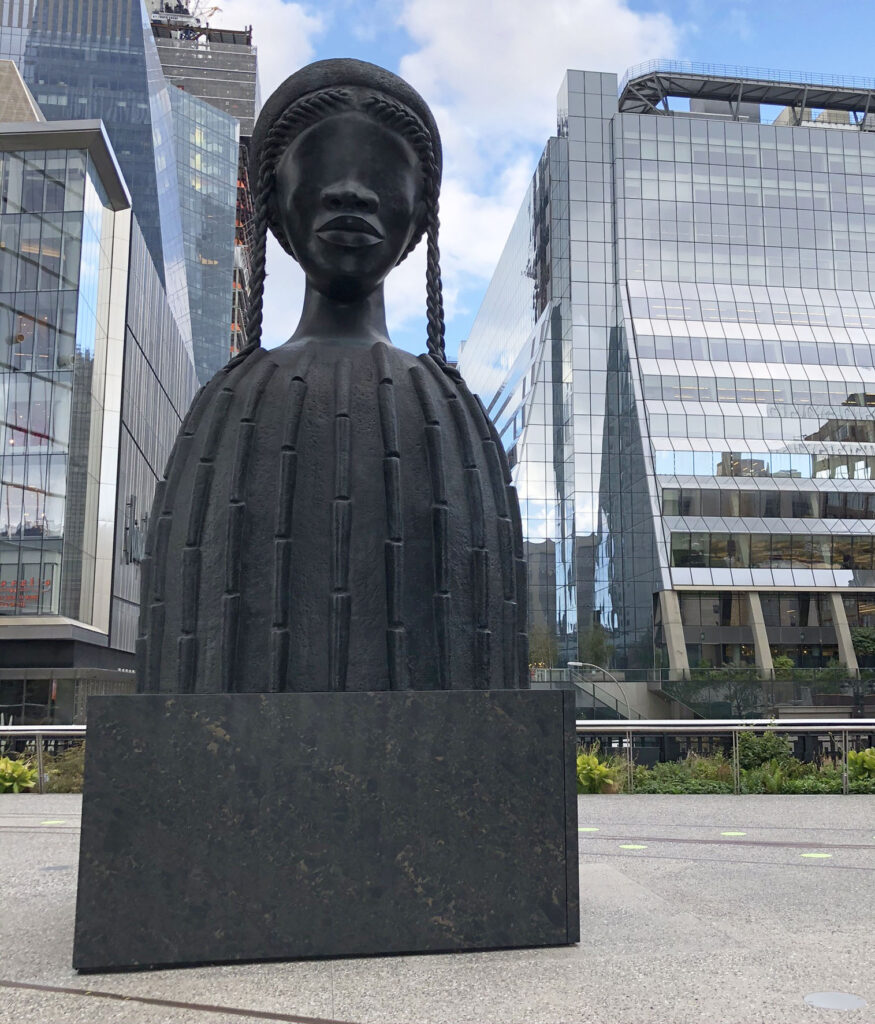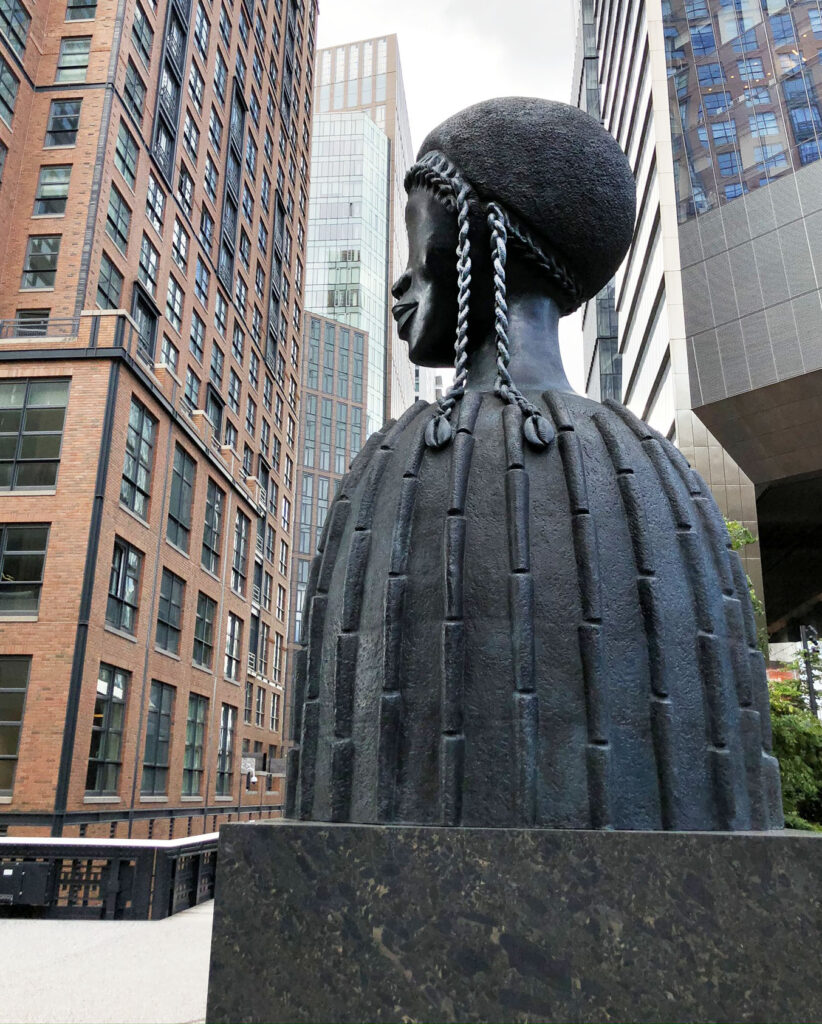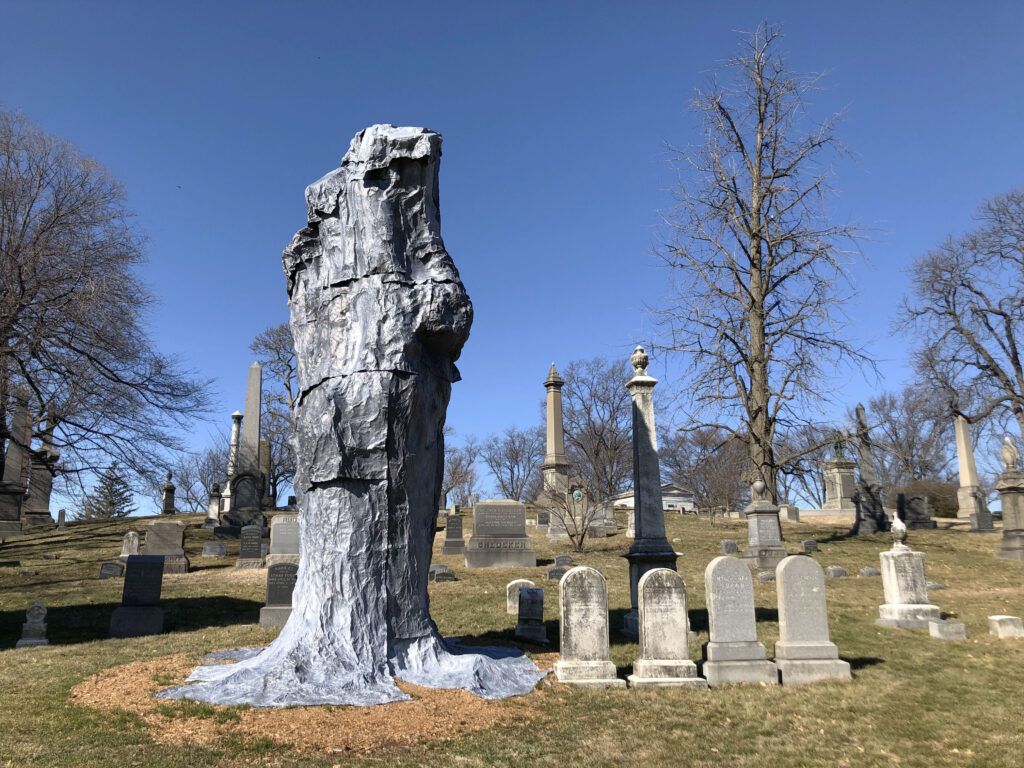
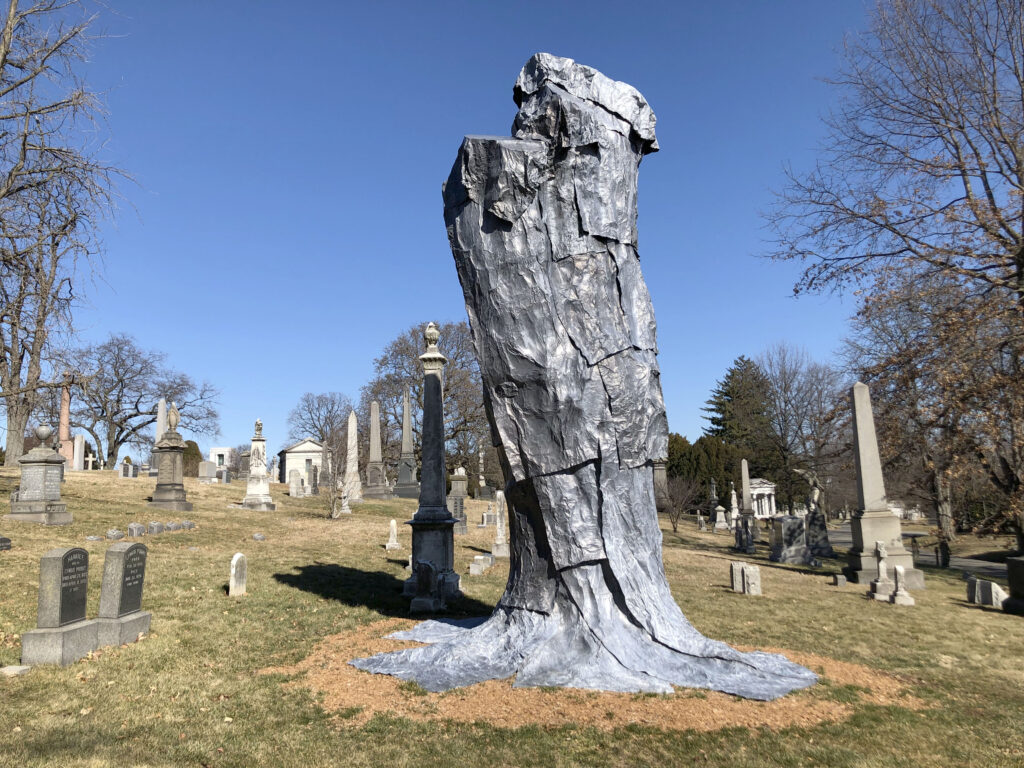
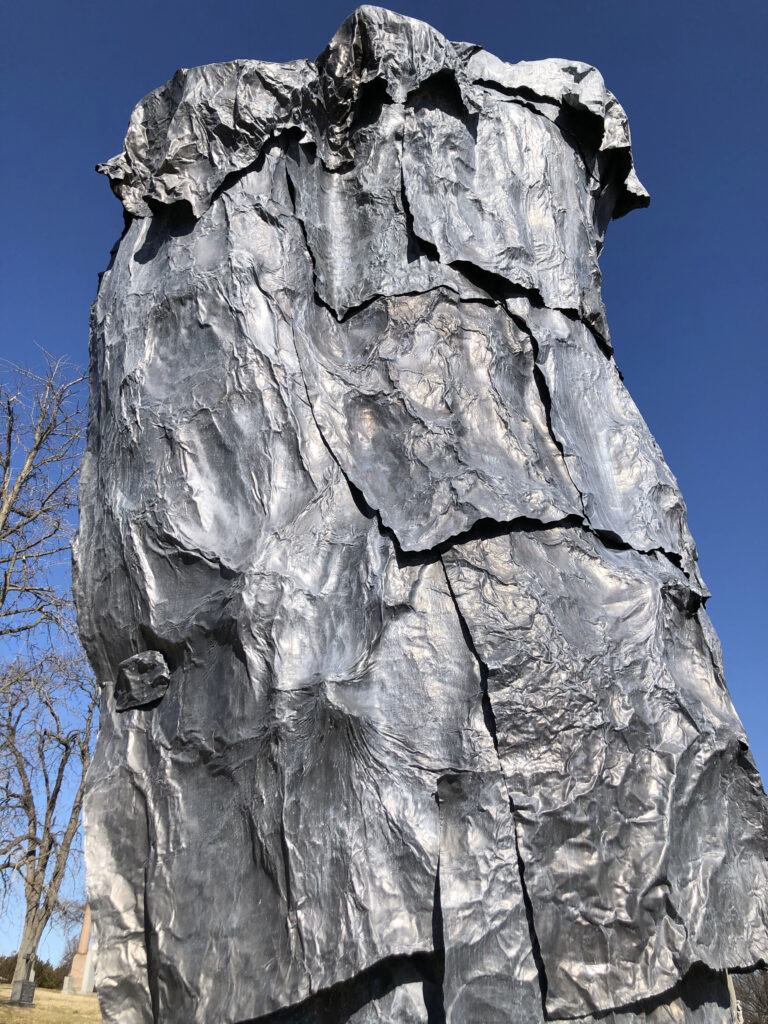
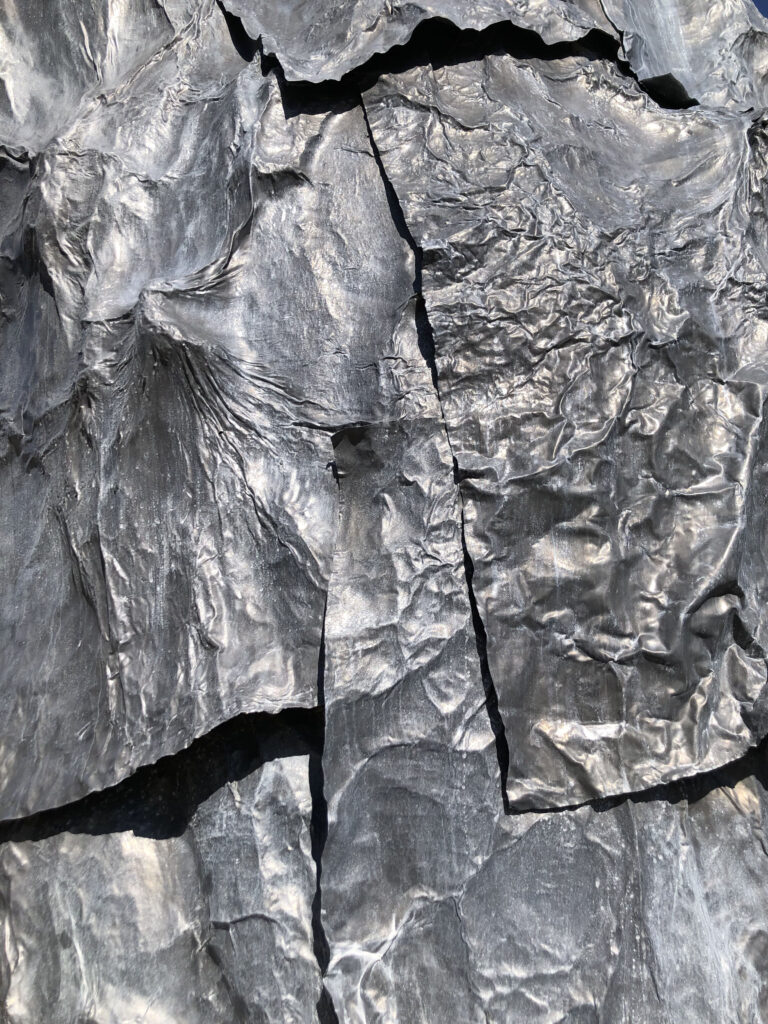
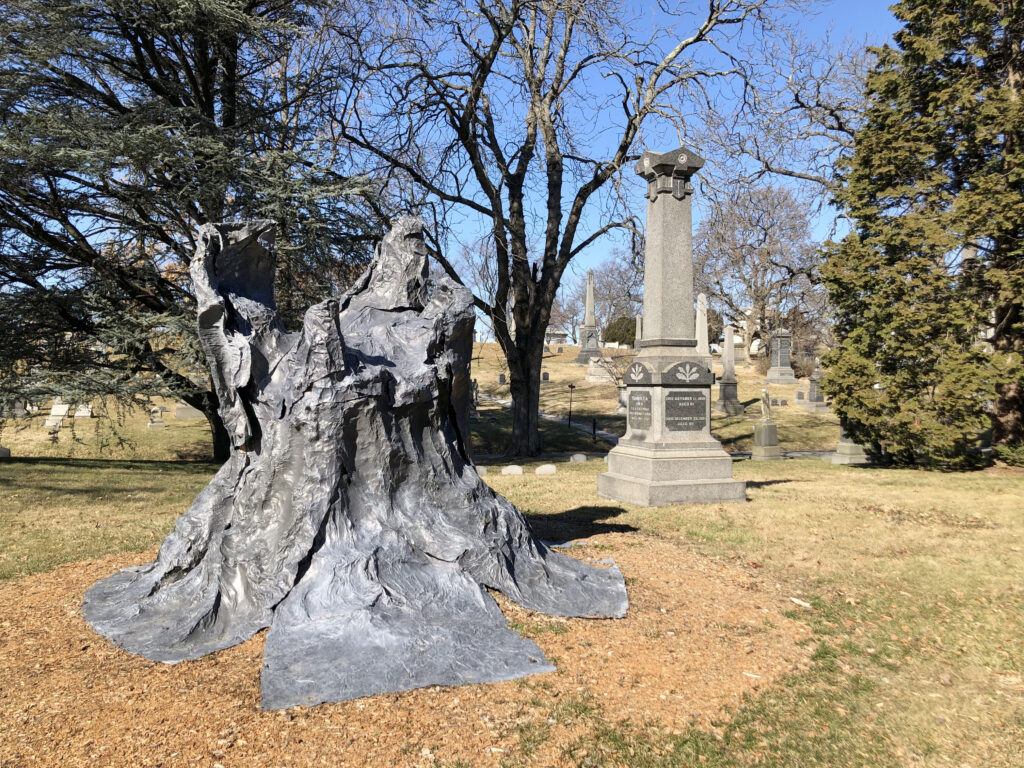
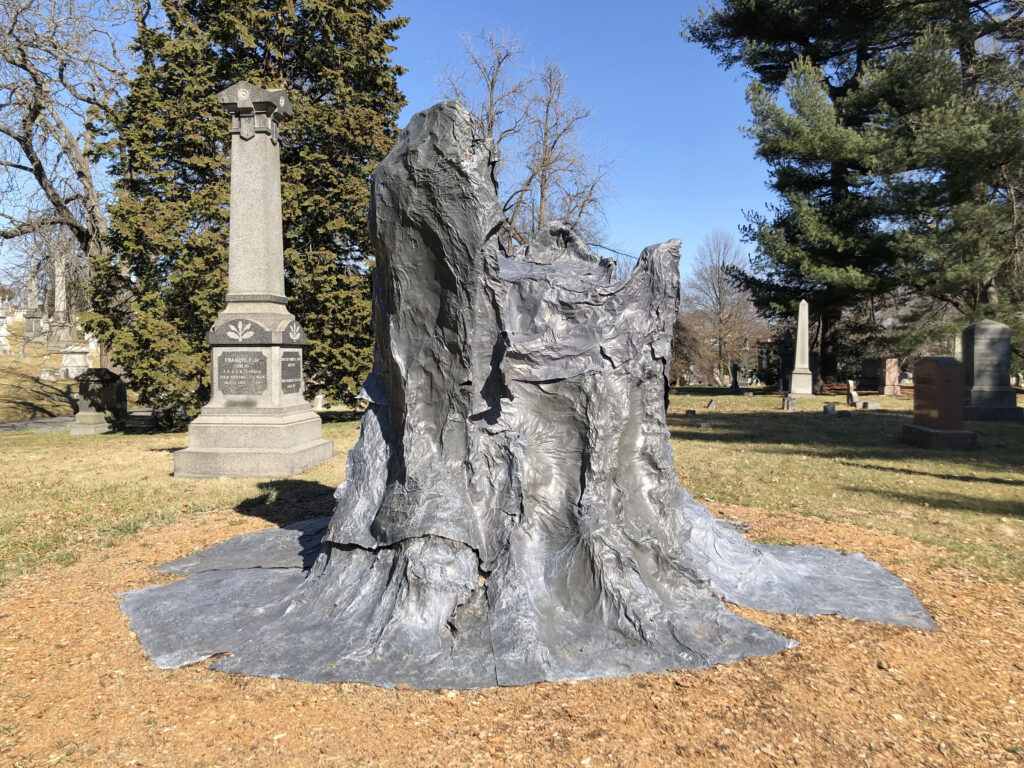
Above are two of the works from Athena LaTocha’s The Remains of Winter (Battle Hill, East), 2022, currently at Greenwood Cemetery in Brooklyn.
From the cemetery’s website about the work-
Athena LaTocha creates large-scale works inspired by her close observations of the natural world, from the deserts and mountains of the Southwest to the Great Plains. She often incorporates elements of these environments, including soil, sand, bark, and rocks. Recently, she has been particularly drawn to trees, considering them as record keepers that bear the markings of time.
Inspired by Green-Wood’s centuries-old trees and its legacy as a place of remembrance, LaTocha has created The Remains of Winter. She cloaked the remains of two massive European beeches on Battle Hill in thin sheets of lead, a material that has been used for centuries in coffins to slow the decomposition of the body. By hand-forming this malleable metal onto the trees, LaTocha captures the unique details of their shapes and forms, even as they slowly degrade beneath the lead.
All around these sculptures, the Cemetery is in a continuous cycle of transformation. Felled trees are turned into mulch for new plantings, earth is removed then replaced for each new burial, and even the stone monuments themselves slowly erode. Through The Remains of Winter, LaTocha memorializes these shifts and changes while also raising profound questions about what we choose to commemorate and mourn—whether it is what we can witness before us or that which, like the movement of continents and land masses, unfolds over lifetimes.
The sculptures will remain on view through September 2023.

